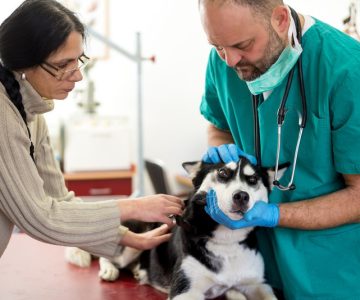Pet Dental Care: How to Protect Your Pet’s Oral Health
The good news for dogs and cats is that they do not get cavities as easily as humans do. Despite the long-held perception that a dog’s mouth is cleaner than a human’s, pets can nevertheless acquire tartar and plaque collection and gingivitis. However, you should be concerned about more than just bad breath and yellow teeth. Like those in humans, these canine dental anomalies can lead to potentially lethal infections and illnesses like heart, liver, and kidney disease.
How to Keep Your Pet’s Teeth Healthy
We’ve included some pointers below on maintaining your pets’ mouths as healthy as your own.
Brush your pet’s teeth daily.
While we are all aware of the need for daily dental care for human teeth, few people realize that pets require the same amount of care daily. It’s best to start this habit when your pet is young since it will help them acclimate quickly. With plenty of positive reinforcement, even an elderly dog or cat can learn this new behavior.
Invest in tooth-friendly foods.
Crunchy kibble is preferable to canned pet food, which promotes tartar and plaque buildup. While many pet diets and treats claim to support oral health in pets, not all of them do. For information on dental-specific diets, speak with your Poway vet.
Have your pet’s teeth examined at least once a year.
While you and your family may visit the dentist on a semi-regular basis, most people do not take their dogs to the pet dentist to get their teeth checked. You should take your pet to the veterinarian at least once a year to have his or her oral health assessed.
Be wary of treats and toys that can damage your pet’s teeth.
While toys and treats can help keep your pet’s teeth clean, others can cause tooth fractures or early tooth erosion. Furthermore, bones and other goods can fragment, causing choking or gastrointestinal discomfort. Offer rawhide, bones, or even nylon tennis balls to your pet only while you are present to supervise. When you must leave your pet alone, provide rubber balls or Kong toys instead to avoid an appointment with the veterinary surgeon in the long run.
Contact your vet immediately if you notice any dental health issues.
If you detect any of the following oral health issues in your pet, you should have their teeth inspected before their yearly dental exam:
- Teeth that are loose or cracked
- Bad breath Discoloration of the teeth
- Tartar-coated teeth
- Mouth bleed
- Swelling of the mouth or surrounding area
- Unusual chewing or food dropping
- Drooling excessively
- Appetite loss or reluctance to eat
- Pain in or around the mouth that is obvious
Conclusion
Dental care can be painful for both humans and pets, but proper maintenance can be cost-effective and even lifesaving in the long term. Medicininių tekstų vertimas Skrivanek Allowing it to go can lead to more expensive and frequently unpleasant vet appointments in the future. Some pets require an anesthetic to clean their teeth and gums if the collection is serious enough. Maintain a clean mouth for your pet, and both of you will be happy.





